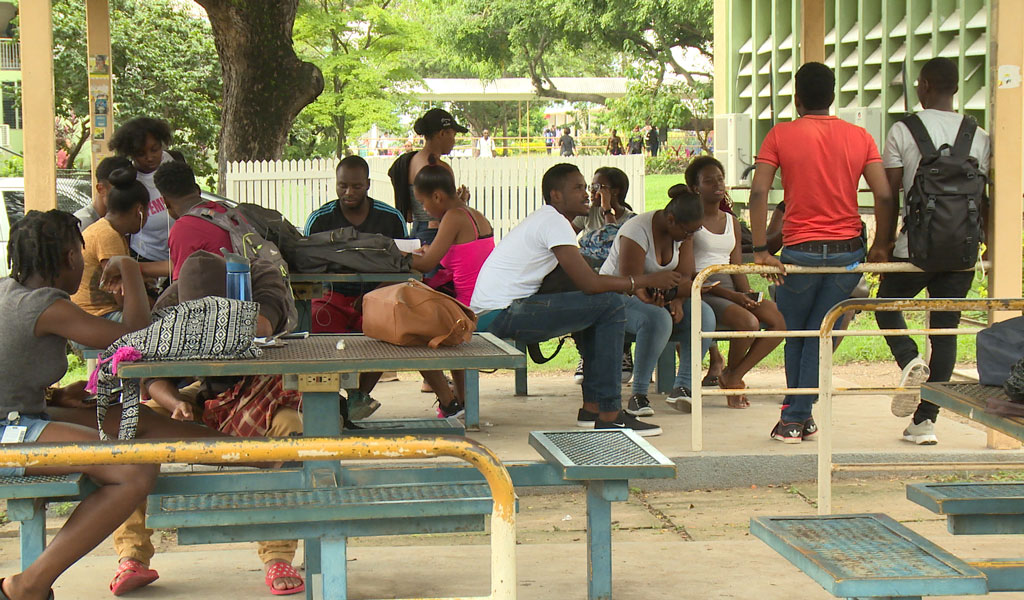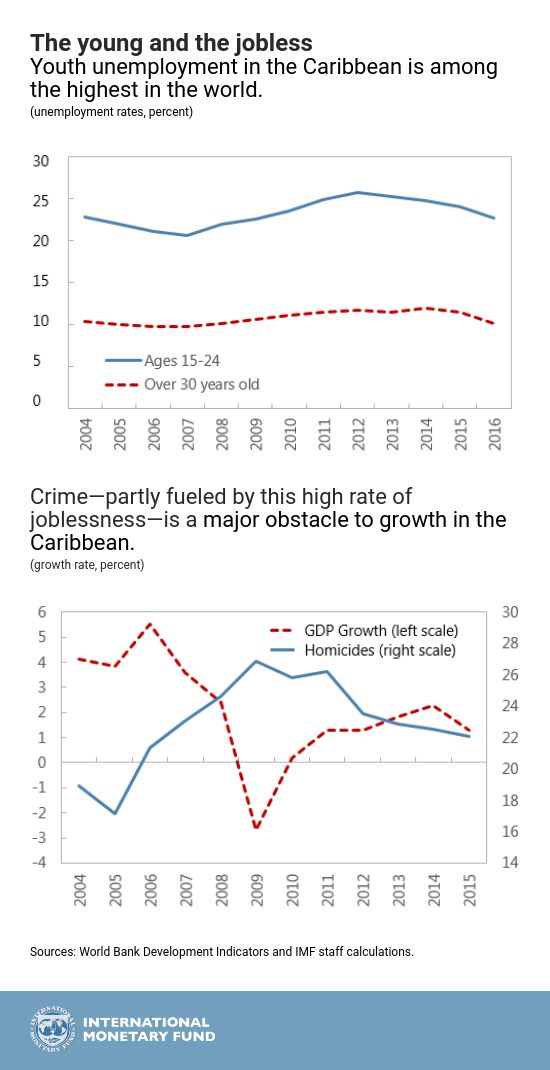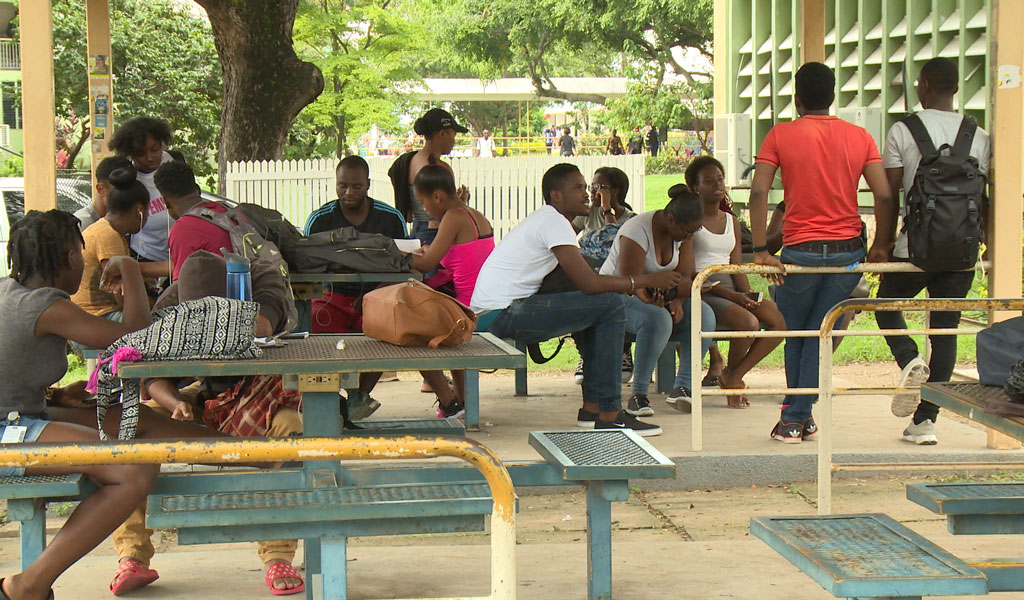February 12, 2018
[caption id="attachment_22648" align="alignnone" width="1024"] Weak growth in the Caribbean reduces economic opportunities for young people, increasing their vulnerability to illegal activities and crime (photo: IMF)[/caption]
Weak growth in the Caribbean reduces economic opportunities for young people, increasing their vulnerability to illegal activities and crime (photo: IMF)[/caption]
Youth unemployment in the Caribbean—among the highest in the world—and crime are key bottlenecks to growth in the region.
In our Chart of the Week, we show that the 2008 global financial crisis had an especially strong effect on the unemployment rate for those between the ages of 15 and 24, which jumped on average by 5 percentage points between 2007 and 2013—from 21 percent to 26 percent. In some countries (for example, the Bahamas, Barbados, and Jamaica), youth unemployment rates are nearly three times that of those aged 30 and over.
The difficult job market has led to an increase in crime in many of the islands. In several Caribbean countries, crime has risen sharply since 2004 and murder rates are now among the highest in the world. More specifically, violent crime in the Caribbean is significantly higher than in any other region (with 6.8 percent of the population affected versus a world average of 4.5 percent), according to a recent IMF book, Unleashing Growth and Strengthening Resilience in the Caribbean. About 40 percent of the Caribbean population identifies crime and security-related issues as the biggest problem facing their countries, even more than poverty or inequality.
According to the 2012 United Nations Caribbean Human Development Report, young people are both the primary victims and perpetrators of crime in the region. Victims of violent crime are mainly between the ages of 18 to 30 and from lower levels of income, while 80 percent of prosecuted crimes were committed by people aged 17 to 29 years.
Efforts to fight crime will require an integrated solution. Balancing crime suppression programs with prevention, including youth vocational training that increases job opportunities in the formal sector and keeps youth off the street, targeting interventions in high crime areas, and developing indicators to more accurate monitor the effectiveness of anticrime programs can deliver good results.
Other readables:
Unleashing Growth and Strengthening Resilience in the Caribbean
2017 High Level Caribbean Forum: Opening Remarks
Labor Market Issues in the Caribbean
Latest Outlook for Latin America and the Caribbean





